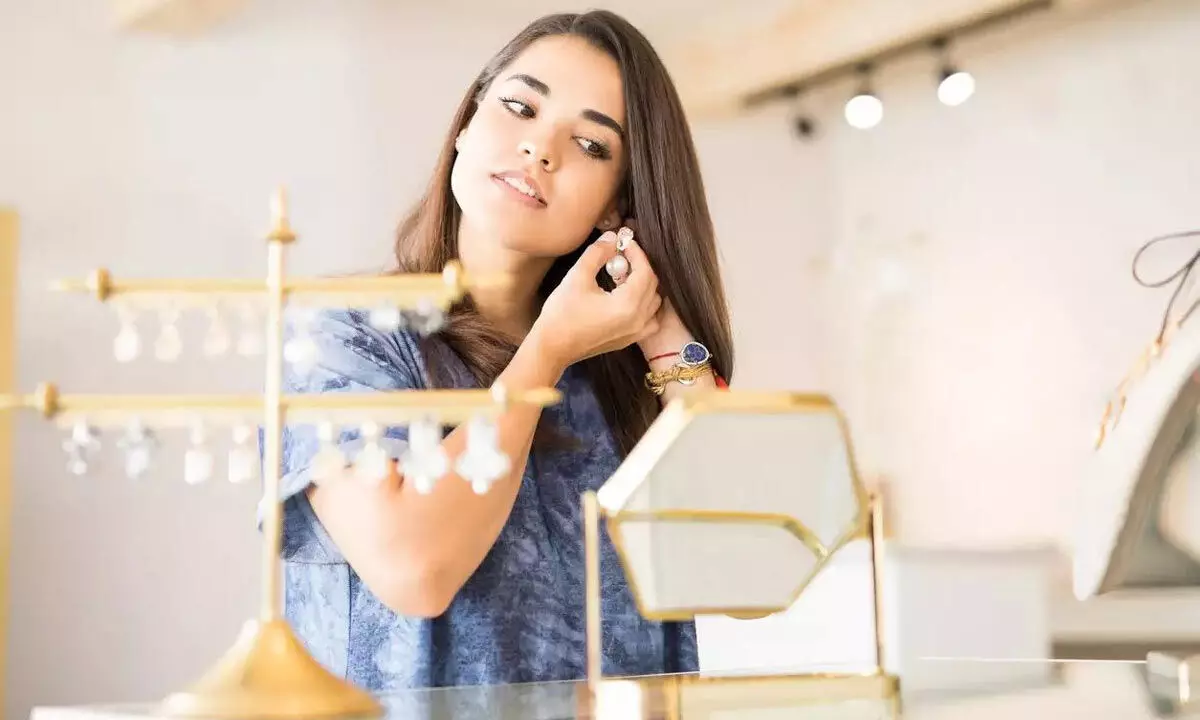Women powering the jewellery industry

Women powering the jewellery industry
Throughout decades, we have witnessed women sharing a close relationship with jewellery.
Throughout decades, we have witnessed women sharing a close relationship with jewellery. This is one of the reasons why certain jewellery pieces are preserved and passed on through generations within the family that eventually become treasured heirlooms. As valuable as the jewellery may be, with each new owner comes an individualised emotional experience and minor modifications to suit personal tastes.
Brides that once favoured hands full of bangles are now opting for delicate cuffs and bracelets. Not only bridal jewellery, the trend across the jewellery industry continues to evolve continually, but one thing that doesn't change is women's affinity for jewellery. Why is this so? The reasons are many; the most pertinent is that jewellery symbolizes femininity and is considered a personal asset.
If you notice, every piece has a story to tell and holds deep sentimental value. Often, these personally valuable pieces incline on individual preference more than a trend. But this doesn't mean the two things can't go hand in hand.
Decoding the ongoing market trends
Reports indicate that the global demand for jewellery is growing as the world continues recovering from a recession followed by an ongoing pandemic. In the last few years, consumers have gravitated towards branded jewellery. This trend is particularly evident among consumers belonging to the upper-middle-class strata of society, especially in Asia, where branded jewellery acts as a status symbol.
The World Gold Council report suggests that the demand for gold jewellery was highest (50% against the global market) from India and China in 2018. The importance of jewellery in Indian culture, higher purchasing power, improved living standards, and social media influence contributes to the jewellery industry's growth in Asia. The report also indicated that consumers of today's day and age are opting for established and internationally acclaimed brands, such as Gargi, because of their authenticity, wide-ranging choice, trustworthy products, and unique designs.
Among extensive jewellery options, the earrings product segment dominated the market with approximately 35% share in 2021. This segment held the largest share owing to the product's versatility. From weddings to red-carpet events and corporate meetings to casual brunches, earrings of different types can be donned for any of these events.
The necklace and chains segment recorded the second-highest growth at a CAGR of 10%, followed by bracelets and earrings. The ability to customise each of these products with metals and stones of one's choice is a significant driver for growth, which will likely benefit the market.
What women want
The consumer approach toward the jewellery market has transformed dramatically in the past one or two decades. The way women indulge in jewellery purchases now differs from when men purchased most jewellery. Today, women are stepping confidently into jewellery stores, investing time to check distinctive designer collections, and adding a personal touch with alterations to stand out.
Take, for instance, something as medieval as chains don't seem to go out of style, but what has undoubtedly evolved is their pattern. Elongated box and bead chains are a thing of the past, and women now prefer layered Figaro or Cuban link chains in a choker style. Another product that continues to thrive through generations is hoops from college campuses to red-carpet events and film studios, front-facing circles with diamonds or coloured gemstones reign supreme.
Lastly, silver necklaces and earrings have been around for quite some time, but layering is the new thing in this segment, and women are mastering this art and adding drama to their ensembles.
Silver jewellery has become the town's talk because it is not restricted to ethnic wear alone and can be worn with different outfits by playing with lengths, mismatched designs, and textures.
This vastly varying palate and consumers' quest for better, bigger, and lighter has posed a challenge for jewellery brands to constantly innovate and introduce newness in an otherwise saturated industry!










